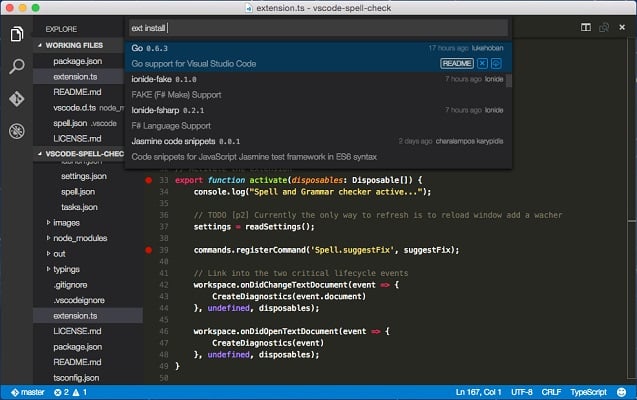Blog
-

Upcoming feature alerts Pixel users which of their apps are tracking them
Do you have a list of the favorite phones you’ve owned? I’ve been lucky enough to have 17 years under my belt with PhoneArena which sure covers plenty of great-and not so… -

Kim Soo-hyun's Agency Denies Minor Relationship, Calls Case Fraud – 조선일보
- Kim Soo-hyun’s Agency Denies Minor Relationship, Calls Case Fraud 조선일보
- Kim Soo Hyun to appear before court in 500 million worth lawsuit filed by VT Cosmetics Moneycontrol
- Kim Soo-hyun’s Lawyer Denies Underage Dating Claims by Kim…
Continue Reading
-

Lactylation-Related Gene CALM1 Promotes Aortic Dissection via Immune M
Introduction
Aortic dissection (AD) is a life-threatening cardiovascular disorder with worldwide clinical significance, pathologically defined by an intimal rupture permitting blood entry into the medial layer, consequently creating separate true and false luminal spaces within the aortic wall.1 The disease progression entails substantial architectural changes in the aorta, featuring VSMC loss, ECM breakdown, and leukocyte accumulation.2 Crucially, inflammatory responses play a central mechanistic role in AD development. Invading immune cells (notably lymphocytes and macrophages) enhance protease and adhesion molecule production while releasing reactive oxygen species. These cells additionally trigger VSMC apoptosis, ultimately causing intimal deterioration – the principal pathological process driving AD formation.3 Although current management relying on surgical and endovascular techniques has advanced, the persistent lack of precise molecular targets and effective drug therapies emphasizes the critical necessity for discovering robust biomarkers to enable timely diagnosis and targeted treatment development.
Lactylation, an essential post-translational modification, significantly influences diverse biological pathways. Conventionally, lactate was viewed solely as the end-product of glycolysis.4 However, a paradigm shift occurred in 2019 when Professor Yingming Zhao’s research team identified lactylation as a novel protein modification occurring on lysine residues, thereby revolutionizing research in this field. This enzymatic process, catalyzed by specific enzymes, facilitates the attachment of lactate groups to lysine residues, subsequently modifying protein charge, structure, and function, and ultimately influencing diverse biological processes.5 The implications of lactylation extend across multiple cellular physiological activities. During tumor development, lactylation regulates essential oncogenic processes such as cancer cell metabolism, proliferation, invasion and metastatic spread via functional modulation of proteins.6 Within the cardiovascular domain, lactylation significantly contributes to various inflammatory responses and impacts cardiovascular system functionality.7–9 Moreover, this modification critically governs immune regulation, profoundly altering immune cell functionality and response dynamics.
Given lactylation’s substantial involvement in cardiovascular diseases and inflammation,10–14 coupled with the absence of reported expression and functions of lactylation-associated genes in AD, this study aims to explore potential connections between lactylation-associated genes, AD, and immunological characteristics. This investigation seeks to provide novel directions and insights for early AD diagnosis. Integrative analysis of bulk and single-cell transcriptomic data enabled identification of lactylation-associated genes in AD and uncovered their correlation with immune microenvironment characteristics.This research is anticipated to yield promising biomarkers for AD diagnosis and establish a novel approach for AD detection, thereby contributing to the theoretical foundation and technical support for early and precise diagnosis of aortic dissection.
Methods
Data Processing
Transcriptomic profiles from two independent GEO cohorts (GSE52093, n=12; GSE98770, n=11) were integrated for analysis. Corresponding clinical information and normalization files were also acquired from the GEO database. To ensure data consistency, batch effects were addressed through principal component analysis (PCA) and the application of the “ComBat” function from the “SVA” R package. This processing yielded a comprehensive AD cohort comprising 23 samples and 18,249 genes, suitable for subsequent analysis.
Identification of Differentially Expressed Genes Between AD and Healthy Individuals
Utilizing the integrated dataset, we performed differential expression analysis employing the limma package (version 4.2.1) in RStudio. DEGs were screened using cutoff criteria of |log2FC| > 0.58 (1.5-fold) and adjusted p-value < 0.05, with analytical results presented in volcano and heatmap visualizations.15 Subsequently, systematic functional annotation of significant DEGs was performed via Gene Ontology (GO) analysis and KEGG pathway enrichment.
Screening of Differentially Expressed Lactylation-Related Genes in AD
Based on comprehensive literature review, we identified 323 lactylation-related genes(Supplementary Data Sheet 1). Integration of differential expression results with lactylation-related genes enabled identification of lactylation-associated DEGs (LDEGs) through intersection analysis. Functional annotation of LDEGs was subsequently conducted using R-based clusterProfiler, incorporating GO enrichment and KEGG pathway analyses to delineate their biological roles. The functional enrichment results were visualized with R’s ggplot2 package to facilitate data interpretation.
Construction of Protein-Protein Interaction Networks
To elucidate the functional characteristics and metabolic pathways of differentially expressed lactylation-associated genes, we utilized the GeneMANIA database (http://genemania.org), a comprehensive online resource for gene function prediction and interaction network construction. This platform enables rapid generation of gene interaction networks by analyzing input gene lists, thereby elucidating relationships between genes and their interaction partners. GeneMANIA integrates diverse data sources and employs sophisticated network weighting models to predict functions of unknown genes based on their interactions with functionally characterized genes. In our study, we imported the differentially expressed lactylation-related genes into this platform to construct and visualize a protein-protein interaction (PPI) network, facilitating comprehensive analysis of gene interactions and functional associations.
Detection of Lactylation-Associated Hub Genes in Aortic Dissection Cases
Three machine learning approaches were employed to analyze pre-filtered lactylation-associated DEGs for hub gene identification in AD: (1) LASSO regression via R’s “glmNETs” package; (2) RF and SVM-REF analyses using “randomForest” and “kernlab” packages respectively. Integration of feature genes from all algorithms identified lactylation-related hub genes, followed by ROC curve analysis with AUC calculation (using “pROC”) to assess diagnostic performance for AD.
Expression, Correlation, and Gene Enrichment Analysis of Hub Genes
Conducting a correlation analysis and visualization between the selected hub genes and other differentially expressed genes using the “corrplot” package in R. Subsequently, analyze the differential expression of each hub gene utilizing the Wilcoxon rank-sum test. Finally, perform Gene Set Enrichment Analysis (GSEA) on the Hallmark gene sets (http://software.broadinstitute.org/gsea/msigdb/) for each hub gene using the R package “clusterProfiler” to elucidate the enriched pathways and functions associated with the hub genes.
Immune Infiltration Analysis
Existing evidence confirms immune cell involvement in AD pathophysiology. Using CIBERSORT, we profiled infiltration patterns of 22 immune cell subtypes in AD cohorts to examine hub gene-immune cell interactions.16 Immune cell correlations and infiltration variations were displayed via R’s “corrplot” and “ggplot2”, while Spearman analysis (“ggstatsplot”) revealed hub gene-immune cell associations, providing mechanistic insights into AD immunopathology.
External Dataset Validation
External validation using the GSE153434 dataset confirmed hub gene expression profiles, with ROC analysis evaluating their diagnostic potential.
scRNA-Seq Analysis
The scRNA-seq dataset (GSE213740: 6 AD cases vs 3 controls) was processed with Seurat in R. Quality control excluded cells with: >15% mitochondrial genes, >3% ribosomal genes, >0.1% erythrocyte genes, or gene counts <200/>7500. Post-QC, PCA-based dimensionality reduction preceded cell clustering (resolution=0.05) and visualization. Cluster-specific DEGs were identified using FindMarkers (log2FC>0.5, p<0.05), with top 5 markers visualized. Cellular lactylation levels were quantified via singscore for AD-normal comparisons.
Specimen Collection and RT-qPCR
The inclusion criteria for aortic dissection cases comprised patients who were: (1) diagnosed with aortic dissection through aortic CTA angiography, (2) underwent aortic artificial vessel replacement surgery, and (3) were aged over 18 years. Normal aortic tissues were collected from individuals undergoing coronary artery bypass grafting procedures. This study incorporated a total of nine clinical samples for differential gene expression validation, including six aortic dissection cases and three control cases (with aortic wall tissue obtained from the perforation site of the ascending aorta during coronary artery bypass grafting). The study protocol was conducted in strict compliance with the ethical principles outlined in the Helsinki Declaration. All experimental procedures and study protocols were reviewed and approved by the Ethics Committee of the Affiliated Hospital of Nantong University (Ethical approval number:2024-K247-01), and written informed consent was obtained from all participants prior to their inclusion in the study.
Total RNA extraction from aortic tissues was conducted with TRIzol reagent (ACCURATE BIOTECHNOLOGY). cDNA synthesis utilized HiScript II Q RT SuperMix (+gDNA wiper, Vazyme R223-01). qPCR amplification was performed with ChamQ SYBR Master Mix (Vazyme Q311-02), normalized to β-Actin expression (primers in Table 1). The 2–ΔΔCT method calculated relative expression, with p<0.05 considered statistically significant.
Table 1 Primer Sequences of Hub Genes
Drug Prediction and Molecular Docking Validation
To advance the identification of prospective therapeutic agents for aortic dissection, this research leveraged the Drug-Gene Interaction Database (DGIdb) to pinpoint targeted drugs corresponding to critical biological targets. The drugs that received the highest scores from this prediction were subsequently subjected to validation through molecular docking experiments with those key targets. To facilitate this process, the two-dimensional structures of small molecule ligands were sourced from the PubChem database (http://pubchem.ncbi.nlm.nih.gov/). These 2D structures were then converted into three-dimensional representations using ChemOffice software, and the resulting 3D structures were saved in mol2 file format for further analysis. For the molecular docking studies, high-resolution crystal structures of the relevant protein targets were obtained from the RCSB Protein Data Bank (RCSB PDB) (http://www.rcsb.org/). These structures were utilized as the docking receptors in our simulations. To prepare the proteins for the docking process, PyMOL software was employed to eliminate water molecules and phosphate groups, resulting in cleaned protein structures that were saved as PDB files. The molecular docking itself was conducted using AutoDock Vina 1.5.6 software, which facilitated the investigation of interactions between the proteins and the ligands. Throughout this process, the structures of both the proteins and the small molecule ligands underwent several modifications; hydrogen atoms were added to the proteins, water molecules were removed, and hydrogen atoms, along with specific torsional degrees of freedom for the small molecule ligands, were carefully managed. Following these preparations, the docking box coordinates were established.Finally, by analyzing and comparing the docking scores, the most favorable conformation from the molecular simulations was ultimately identified. Visualization and analysis of the interaction patterns between the candidate compounds and critical amino acids were conducted using PyMOL and Discovery Studio 2019 software, elucidating the 2D and 3D interaction diagrams that are crucial for understanding the binding characteristics of the predicted therapeutic agents.
Result
The Overall Expression Profile of AD Patients
After integrating and removing batch effects from two AD-related datasets (GSE52093 and GSE98770), we achieved expression profiles that included 13 patients diagnosed with AD and 10 healthy individuals (Figure 1A–D). The analysis for differential expression found 423 genes that were upregulated and 470 that were downregulated in patients with AD (Figure 2A). The 50 genes with the most significant differential expression were depicted using hierarchical clustering in a heatmap (Figure 2B). Following this, GO enrichment analysis of the differentially expressed genes (Figure 3A) indicated notable enrichment in biological processes linked to “mitotic cell cycle phase transition”, cellular components related to “collagen-containing extracellular matrix”, and molecular functions primarily associated with “actin binding.” Furthermore, an analysis of pathways using the KEGG revealed significant connections between AD and both the “cell cycle” as well as the “p53 signaling pathway” (Figure 3B).

Figure 1 Analysis of the merged and corrected two GEO datasets. (A and B) Expression profiles before and after raw data correction. (C and D) Differential gene expression profiles before and after data normalization.

Figure 2 Differential expression analysis of the AD patient dataset. (A) Volcano plot of differentially expressed genes. (B) Heatmap of the top 50 differentially expressed genes.

Figure 3 Functional enrichment analysis of differentially expressed genes. (A) GO enrichment analysis. (B) KEGG enrichment analysis.
Expression Characteristics of Lactylation-Related Genes
Following the acquisition of expression profiles, we examined 332 lactylation-associated genes and their differential expression patterns. The analysis revealed that, in contrast to three downregulated genes, ten lactylation-related genes were significantly upregulated in Alzheimer’s disease (AD) patients (Figure 4A and B). In order to substantiate these findings further, we conducted a functional analysis on 13 genes associated with lactylation that were expressed differentially. The GO analysis revealed notable enrichment in biological processes concerning “protein localization within organelles”, molecular functions related to “binding specific to protein domains”, and cellular components tied to “histone deacetylase binding” (Figure 4C–E). Furthermore, the KEGG pathway analysis uncovered significant changes in the pathways of “vascular smooth muscle contraction” and “cellular senescence” (Figure 4F).

Figure 4 Functional Analysis of Lactylation-Related Genes. (A and B) Differentially expressed genes related to lactylation. (C–E). GO enrichment analysis of lactylation-related genes. (F) KEGG enrichment analysis of lactylation-related genes.
Identification of Lactylation-Related Central Genes
To systematically identify hub genes associated with lactylation, we employed a multi-method approach. First, LASSO regression analysis was performed on the 13 differentially expressed genes, yielding 5 feature genes (Figure 5A and B). Subsequently, random forest ranking was applied to prioritize lactylation-related genes, identifying the top 10 candidates (Figure 5C). Further refinement using the SVM-REF algorithm revealed 4 feature genes (Figure 5D). Through integration of results from these three complementary methods, we identified three hub genes for lactylation: CALM1, PTBP1, and PARP1 (Figure 5E). The diagnostic potential of these hub genes was evaluated using ROC analysis, demonstrating their robust ability to distinguish AD patients from healthy controls (Figure 5F). Finally, we constructed a protein-protein interaction network for these three differentially expressed lactylation-related hub genes using the GeneMANIA database (Supplementary Figure 1).

Figure 5 Identification of Lactylation Hub Genes. (A–B) LASSO regression identified 5 feature genes. (C) Random Forest ranked the importance of 10 feature genes. (D) SVM support vector machine algorithm selected 4 feature genes. (E) The intersection of feature genes obtained from the three methods yielded 3 hub genes. (F) ROC curves of the 3 genes for predicting disease occurrence.
Expression, Correlation, and Gene Enrichment Analysis of Hub Genes
After identifying the hub genes, we performed comprehensive correlation analyses between these three hub genes and all other genes, visualizing the top three genes showing significant positive and negative correlations. Our findings revealed that RILPL1, PLS3, and GABARAPL2 exhibited significant positive correlations with CALM1, while TRIP12, SMARCC1, and CYB561D2 showed significant negative correlations with CALM1 (Supplementary Figure 2). Similarly, FES, TFDP1, and ELF3 demonstrated significant positive correlations with PARP1, whereas DNAJC24, DIXDC1, and AFTPH displayed significant negative correlations with PARP1 (Supplementary Figure 3). Furthermore, CANT1, ILF3, and XPO6 were significantly positively correlated with PTBP1, while CRBN, CD2AP, and TMEM106B showed significant negative correlations with PTBP1 (Supplementary Figure 4).
Subsequently, we investigated the roles of CALM1, PARP1, and PTBP1 in AD by comparing their expression profiles between normal and AD groups. The findings indicated that CALM1 levels were significantly elevated in the normal group in comparison to the AD group. Conversely, expression levels of PARP1 and PTBP1 were significantly increased in the AD group when compared to the normal group (Figure 6A). Additionally, we performed Gene Set Enrichment Analysis (GSEA) on these central genes (Figure 6B). This analysis uncovered a positive correlation between CALM1 levels and the myogenesis pathway, alongside a negative correlation with the glycolysis and oxidative phosphorylation pathways. Meanwhile, PARP1 expression demonstrated positive links to the NF-κB signaling pathway and the inflammatory response pathway, while showing a negative relationship with the myogenesis pathway. In a similar manner, PTBP1 expression was positively associated with both the NF-κB signaling and inflammatory response pathways, but negatively associated with the myogenesis pathway.

Figure 6 Characterization of Hub Gene Expression and GSEA Enrichment Analysis. (A) Expression of hub genes, with red indicating the normal group and blue representing the AD group. (B) GSEA enrichment results of hub genes.
The Correlation Between Key Target Expression and Immunological Characteristics in AD Patients
We conducted a comprehensive analysis of immune cell infiltration levels in patients with aortic dissection (AD) and healthy controls. The results revealed that healthy individuals exhibited significantly higher infiltration levels of γδT cells and resting mast cells compared to the AD group, while showing significantly lower levels of resting natural killer cell infiltration (Figure 7A and C). To further investigate the interrelationships among immune cells, we performed correlation analysis to elucidate potential interactions and their implications for immune-inflammatory mechanisms in AD (Figure 7B).

Figure 7 Immunoinfiltration Analysis. (A) The relative proportions of 22 immune cell subsets in all samples from the AD dataset. (B) The correlations of the 22 immune cell subsets. (C) Differences in the levels of 22 immune cell types between the normal group and the AD group.
Our analysis demonstrated a positive correlation between γδT cells and both M1 macrophages and resting mast cells, suggesting potential synergistic interactions and functional interdependence among these cell populations in the immune response to aortic dissection. Conversely, we observed negative correlations between resting natural killer cells and both resting mast cells and γδT cells, potentially reflecting disease-induced imbalances in the immune system’s inflammatory response, immune regulation, and immune surveillance capabilities. These findings highlight the crucial role of immune cell interactions in the pathogenesis and progression of aortic dissection.
Furthermore, we identified significant correlations between the three hub genes and specific immune cell populations (Figure 8). CALM1 expression showed a significant negative correlation with plasma cell infiltration, while demonstrating positive correlations with CD8-positive T cells, resting mast cells, and γδT cells. PARP1 expression exhibited a negative correlation with γδT cell infiltration and positive correlations with CD4-positive naive T cells and resting NK cells. PTBP1 expression was negatively correlated with γδT cell infiltration and positively correlated with resting NK cells, activated dendritic cells, monocytes, and naive B cells. These findings suggest complex interactions between lactylation-related genes and immune cell populations in the context of aortic dissection.

Figure 8 Correlation between Hub Genes and Immune Cells.
Validation of Hub Genes in External Datasets
To assess the reliability of hub genes related to lactylation that are differentially expressed in AD, we analyzed the expression profiles of three lactylation-associated genes—CALM1, PTBP1, and PARP1—using the independent dataset GSE153434. Our comparative analysis indicated that the expression of CALM1 was significantly reduced in the AD group when compared to the normal control group. In contrast, we found that PTBP1 expression was significantly increased in the AD group relative to the normal controls (Figure 9A and B). Interestingly, PARP1 expression did not demonstrate any notable differences between the two groups (Figure 9C). The receiver operating characteristic (ROC) curve analysis revealed that both CALM1 and PTBP1 had strong diagnostic capabilities, with area under the curve (AUC) values of 0.93 and 0.83, respectively. On the other hand, PARP1 exhibited minimal diagnostic value, yielding an AUC of 0.50 (Figure 9D).

Figure 9 External Dataset Validation of Hub Genes. (A–C) Expression characteristics of hub genes in the external dataset, with red representing the normal group and blue representing the AD group. (D) ROC curves of hub genes for predicting disease occurrence in the external dataset.
Identification of Cell Clusters in AD Patients
The single-cell dataset GSE213740, comprising six aortic dissection samples and three normal controls, was obtained from the GEO database. Initial quality control measures were implemented, with Figure 10A and B illustrating the distribution of gene counts (nFeature), sequencing depth (nCount), and mitochondrial gene percentage (percent.mt). For subsequent analysis, the top 2000 highly variable genes were selected, with the top 10 most variable genes displayed in Figure 10C. Based on the analysis presented in Figure 11A, we determined the optimal number of principal components (PCs) to be 9. Cluster analysis results suggested an appropriate resolution of 0.1 (Figure 11B), with marker genes for each cell population visualized through heatmap analysis (Figure 12A). Utilizing the UMAP algorithm, we classified the single-cell sequencing samples into 11 distinct clusters (Figure 12B), which were subsequently identified as 11 immune cell populations (Figure 12C). These populations included endothelial cells, smooth muscle cells, mesenchymal cells, macrophages, T cells, B cells, monocytes, mast cells, plasma cells, fibroblasts, M1 macrophages, and M2 macrophages. Differential expression analysis across all 11 cell populations identified the top five highly and lowly expressed genes in each population (Figure 13A).

Figure 10 Data Quality Control. (A and B) Changes in single-cell dataset quality control before and after. (C) Top 10 highly variable gene markers.

Figure 11 Selection of Principal Component Numbers and Resolution. (A) Heatmap is used to display the expression levels of marker genes for the top 20 PCs. (B) Clustering tree is used to select the appropriate resolution.

Figure 12 Cell Population Clustering. (A) Heatmap of marker genes for each cell population. (B) UMAP algorithm divides cells into 11 subgroups. (C) 11 cell subgroups are annotated as 11 immune cell types.

Figure 13 Differential Expression Analysis. (A) Differentially expressed genes (top 5) in each cell cluster. (B) Expression profiles of hub genes across different cell clusters.
Further investigation of lactylation hub gene expression across these 11 immune cell types revealed distinct expression patterns (Figure 13B). CALM1 exhibited high expression in smooth muscle cells, B cells, and fibroblasts, while showing low expression in endothelial cells, mesenchymal cells, mast cells, and M2 macrophages. PTBP1 demonstrated elevated expression in endothelial cells, T cells, B cells, mast cells, fibroblasts, and M1 macrophages, but was minimally expressed in smooth muscle cells, mesenchymal cells, monocytes, and M2 macrophages. Similarly, PARP1 showed high expression levels in T cells, B cells, fibroblasts, and M1 macrophages, with reduced expression observed in mesenchymal cells, monocytes, and mast cells.
Single-Cell Analysis Validates Lactylation and Immune Interactions in AD
To further investigate the immune-related interactions between lactylation and AD, we performed single-cell scoring analysis of the lactylation-related gene set. Our analysis revealed elevated lactylation levels in fibroblasts, smooth muscle cells, monocytes, and T cells, while other immune cell types showed no significant differences in lactylation levels (Supplementary Figure 5A). Subsequent comparative analysis of lactylation gene set scores between AD and normal samples demonstrated significantly higher lactylation scores in the AD group. This finding suggests that aortic tissues from AD patients exhibit elevated lactylation levels compared to normal controls. Furthermore, we observed significant differences in lactylation levels of immune cells between the two groups (Supplementary Figure 5B).
Clinical Sample Validation
RT-qPCR was utilized to assess the expression profiles of CALM1, PTBP1, and PARP1 in clinical samples, with comparisons made between patients with aortic dissection (AD) (n = 6) and normal controls (n = 3). The results indicated a notable decrease in CALM1 expression within the AD cohort relative to the normal controls. Conversely, the expression levels of PTBP1 and PARP1 did not exhibit any statistically significant variations between the AD and control groups (Figure 14).

Figure 14 RT-qPCR detection of hub gene mRNA expression levels. ns, no significant difference, *p < 0.05.
Drug Prediction and Molecular Docking Validation
Utilizing the DGIdb database, we forecasted potential drugs aimed at the key biomarker CALM1 and ultimately pinpointed the top five highest-scoring candidate drugs (Figure 15A). Among these candidates, PRENYLAMINE, which showed the highest targeting score, was chosen for molecular docking validation against CALM1. Generally, a binding energy that falls below −5.0 kcal/mol is indicative of favorable binding activity between the ligand and its target protein, where lower binding energy values signify greater binding affinity, increased stability, and more advantageous conformational interactions. Our findings revealed that PRENYLAMINE reached a binding energy of −6.6 kcal/mol when interacting with CALM1 (Figure 15B), indicating its potential as a therapeutic option for aortic dissection.

Figure 15 Drug Prediction and Molecular Docking Validation.(A) Potential targeted drugs for CALM1.(B) Molecular docking results of PRENYLAMINE with CALM1.
Discussion
The current understanding of aortic dissection (AD) pathogenesis recognizes inflammation, apoptosis, endothelial cell dysfunction, phenotypic transformation of smooth muscle cells, and extracellular matrix degradation as critical pathological components, with emerging evidence implicating epigenetic modifications in these processes.17–21 While metabolic reprogramming and its epigenetic consequences are increasingly recognized in cardiovascular pathologies, the specific role of lactate accumulation, and its associated lactylation modifications in AD development remains unexplored. Our study bridges this knowledge gap by identifying three lactylation-associated hub genes (CALM1, PARP1, and PTBP1) through integrated RNA sequencing analysis and investigated their relationship with immune cell infiltration patterns.
CALM1: A Calcium Signaling Nexus in AD Pathogenesis
Firstly, through comprehensive transcriptomic analysis, we identified CALM1 as a potential lactylation-related biomarkers distinguishing AD patients from healthy individuals. As the most evolutionarily conserved calmodulin isoform,22,23 CALM1 regulates fundamental cellular process including motility, differentiation, and proliferation,24 with established roles in oncogenesis,25 neurodegeneration,26 and fibrotic disorders.27 Mechanistically, CALM1 overexpression activates PI3K-Akt pathway, subsequently suppressing hepatic gluconeogenesis – a pathway critically involved in apoptosis regulation, oxidative stress responses, and inflammatory signaling.28
Our network analysis extends these finding by revealing novel association between CALM1 expression and mTORC1 signaling pathway, glycolysis – oxidative phosphorylation coupling, and the infiltration patterns of nearly all immune cell types. These associations suggest CALM1 as a potential orchestrator of the pro-inflammatory microenvironment characteristic of AD. However, further experimental investigations are necessary to fully elucidate the specific functions and molecular mechanisms of CALM1 in the pathogenesis of AD.
PARP1: Metabolic-Inflammatory Crosstalk
PARP1, also known as Poly(ADP-ribose) polymerase 1, is an enzyme that is highly conserved and dependent on NAD⁺. It is crucial for the regulation of various intracellular physiological processes, such as the repair of DNA damage, the regulation of gene transcription, chromatin remodeling, and the modulation of apoptosis.29–31 The relationship between PARP1 and lactate/lactylation is both intricate and significant. Lactate exerts substantial influence on PARP1, not only by directly inhibiting its activity but also by indirectly modulating its function through alterations in cellular energy metabolism and redox balance.32 In chronic inflammation, excessive PARP1 activation establishes a pathogenic feedback loop by amplifying NF-κB-mediated TNFα/IL-6 production.33,34 Our findings demonstrate elevated PARP1 expression levels in aortic tissues of AD patients compared to normal controls. This correlations between PARP1 elevation and CD4T cell/mast cell infiltration align with the previous paradigm, suggesting PARP1-mediated immune dysregulation contributes to AD progression.
PTBP1: Metabolic Reprogramming Driver
The RNA-binding protein PTBP1 emerged as a third lactylation-associated factor elevated in AD tissues. As one member of heterogeneous nuclear ribonucleoprotein (hnRNP) subfamily, PTBP1is encoded on human chromosome 19p13.3.35 In the metabolism of cancer cells, PTBP1 enhances the production of the M2 isoform of pyruvate kinase (PKM2) and concurrently inhibits the expression of PKM1, resulting in a metabolic transition from oxidative phosphorylation to glycolysis, which enhances glycolytic flux and lactate accumulation, significantly influencing tumor initiation and progression.36,37 Meanwhile, recent studies identifies lactylation-modified PTBP1 as a glycolysis amplifier in glioma stem cells via PFKFB4 mRNA stabilization.38
Our single-cell analysis reveals broad PTBP1 upregulation across AD aortic cell types (endothelial cells, T cells, B cells, mast cells, fibroblasts, and M1 macrophages), suggesting it may similarly drive glycolytic flux and lactate accumulation in aortic tissues. The resultant lactylation surge could destabilize immune homeostasis through post-translational modification of regulatory proteins – a hypothesis requiring experimental verification. These findings demonstrate that PTBP1 likely functions as a promoting factor in the pathogenesis and progression of aortic dissection.
Lactylation Landscape in AD Microenvironment
Recent advancements in epigenetic research have demonstrated that lactate-induced histone lactylation plays a significant role in modulating cellular physiological functions and immune cell modifications.39 To investigate this phenomenon in AD, we conducted a comprehensive analysis of cellular lactylation levels using single-cell sequencing data, comparing AD patients with healthy individuals. The results revealed significant lactylation elevation in AD lesions, particularly within fibroblasts, smooth muscle cells, and myeloid populations. While B/T lymphocytes exhibited relatively lower lactylation levels, their functional sensitivity to lactylation-mediated epigenetic changes warrants further investigation. The spatial correlation between lactate accumulation (from enhanced glycolysis) and lactylation patterns suggests a self-reinforcing metabolic-epigenetic circuit in AD pathogenesis.
Clinical Validation and Limitations
Finally, we performed experimental validation of the three hub genes using clinical samples, which demonstrated statistically significant differences in CALM1 expression between AD and control groups, whereas PARP1 and PTBP1 showed no significant differential expression. This divergence highlights the complex translation from bioinformatic prediction to biomarker validation, potentially reflecting post-transcriptional regulation or tissue-specific expression patterns. These results indicate that CALM1, rather than PARP1 or PTBP1, may serve as a promising biomarker for AD diagnosis.
While our multi-modal analysis implicates lactylation in AD-associated immune dysregulation, several limitations must be acknowledged: 1) The observational nature of human tissue studies precludes causal inference; 2) Lactylation’s cell-type-specific effects require functional validation in experimental models; 3) The diagnostic utility of lactylation markers needs prospective clinical evaluation.
Conclusion
Through a multidisciplinary investigation combining bioinformatic analyses and experimental validation, we conducted a systematic exploration of lactylation-mediated regulatory mechanisms in AD pathogenesis. Our findings demonstrate that CALM1 emerges as a novel and promising diagnostic biomarker, showing robust discriminative capacity between AD patients and healthy controls through comprehensive validation across multiple analytical platforms. Complementing these discoveries, high-resolution single-cell RNA sequencing revealed cell type-specific lactylation patterns within the AD aortic microenvironment, delineating previously unrecognized epigenetic regulatory networks across diverse cellular subpopulations. These results substantially advance our understanding of metabolic-epigenetic crosstalk in vascular remodeling disorders, providing mechanistic insights that bridge lactylation dynamics with AD progression. The identification of CALM1 as a lactylation-associated diagnostic indicator, coupled with our comprehensive cellular atlas of lactylation modifications, establishes a critical foundation for future investigations into AD’s molecular pathology. This work not only elucidates new pathophysiological dimensions of aortic dissection but also presents tangible translational applications, potentially enabling the development of lactylation-targeted diagnostic panels and therapeutic interventions for this life-threatening cardiovascular condition.
Data Sharing Statement
The datasets supporting the conclusions of this article are available in the GEO database, https://www.ncbi.nlm.nih.gov/geo/.
Ethics Approval and Consent to Participate
All experimental procedures and study protocols were reviewed and approved by the Ethics Committee of the Affiliated Hospital of Nantong University.All studies were conducted in accordance.
Funding
This work was supported by grants from Jiangsu Provincial Research Hospital (YJXYY202204-YSB58).
Disclosure
The authors declare that the research was conducted in the absence of any commercial or financial relationships that could be construed as a potential conflict of interest. Zhiming Yu, Yue Pan and Xiaoyu Qian contribute equally to this article as co-first author.
References
1. Vilacosta I, San Román JA, Di Bartolomeo R, et al. Acute aortic syndrome revisited: jacc state-of-the-art review. J Am Coll Cardiol. 2021;78(21):2106–2125. doi:10.1016/j.jacc.2021.09.022
2. Chen Y, Zhang T, Yao F, et al. Dysregulation of interaction between LOXhigh fibroblast and smooth muscle cells contributes to the pathogenesis of aortic dissection. Theranostics. 2022;12(2):910–928. doi:10.7150/thno.66059
3. Luo F, Zhou XL, Li JJ, et al. Inflammatory response is associated with aortic dissection. Ageing Res Rev. 2009;8(1):31–35. doi:10.1016/j.arr.2008.08.001
4. Chen AN, Luo Y, Yang YH, et al. Lactylation, a novel metabolic reprogramming code: current status and prospects. Front Immunol. 2021;12:688910. doi:10.3389/fimmu.2021.688910
5. Zhang D, Tang Z, Huang H, et al. Metabolic regulation of gene expression by histone lactylation. Nature. 2019;574(7779):575–580. doi:10.1038/s41586-019-1678-1
6. Malsi K, Xie S, Cai Y, et al. The role of lactylation in tumor growth and cancer progression. Front Oncol. 2025;15. doi:10.3389/fonc.2025.1516785
7. She H, Hu Y, Zhao G, et al. Dexmedetomidine ameliorates myocardial ischemia-reperfusion injury by inhibiting MDH2 lactylation via regulating metabolic reprogramming. Adv Sci. 2024;11(48):e2409499. doi:10.1002/advs.202409499
8. Wang J, Yang P, Yu T, et al. Lactylation of PKM2 suppresses inflammatory metabolic adaptation in pro-inflammatory macrophages. Int J Biol Sci. 2022;18(16):6210–6225. doi:10.7150/ijbs.75434
9. Wu D, Spencer CB, Ortoga L, et al. Histone lactylation-regulated METTL3 promotes ferroptosis via m6A-modification on ACSL4 in sepsis-associated lung injury. Redox Biol. 2024;74:103194. doi:10.1016/j.redox.2024.103194
10. Zhang N, Zhang Y, Xu J, et al. α-myosin heavy chain lactylation maintains sarcomeric structure and function and alleviates the development of heart failure. Cell Res. 2023;33(9):679–698. doi:10.1038/s41422-023-00844-w
11. Li X, Chen M, Chen X, et al. TRAP1 drives smooth muscle cell senescence and promotes atherosclerosis via HDAC3-primed histone H4 lysine 12 lactylation. Eur Heart J. 2024;45(39):4219–4235. doi:10.1093/eurheartj/ehae379
12. Xu X, Zhang DD, Kong P, et al. Sox10 escalates vascular inflammation by mediating vascular smooth muscle cell transdifferentiation and pyroptosis in neointimal hyperplasia. Cell Rep. 2023;42(8):112869. doi:10.1016/j.celrep.2023.112869
13. An S, Yao Y, Hu H, et al. PDHA1 hyperacetylation-mediated lactate overproduction promotes sepsis-induced acute kidney injury via Fis1 lactylation. Cell Death Dis. 2023;14(7):457. doi:10.1038/s41419-023-05952-4
14. Lin J, Ren J. Lactate-induced lactylation and cardiometabolic diseases: from epigenetic regulation to therapeutics. Biochim Biophys Acta Mol Basis Dis. 2024;1870(6):167247. doi:10.1016/j.bbadis.2024.167247
15. Phipson B, Wu D, Wu D, et al. limma powers differential expression analyses for RNA-sequencing and microarray studies. Nucleic Acids Res. 2015;43(7):e47. doi:10.1093/nar/gkv007
16. Newman AM, Liu CL, Green MR, et al. Robust enumeration of cell subsets from tissue expression profiles. Nat Methods. 2015;12(5):453–457. doi:10.1038/nmeth.3337
17. Cui H, Chen Y, Li K, et al. Untargeted metabolomics identifies succinate as a biomarker and therapeutic target in aortic aneurysm and dissection. Eur Heart J. 2021;42(42):4373–4385. doi:10.1093/eurheartj/ehab605
18. Luo S, Kong C, Zhao S, et al. Endothelial HDAC1-ZEB2-NuRD complex drives aortic aneurysm and dissection through regulation of protein S-Sulfhydration. Circulation. 2023;147(18):1382–1403. doi:10.1161/CIRCULATIONAHA.122.062743
19. Yin Z, Zhang J, Zhao M, et al. EDIL3/Del-1 prevents aortic dissection through enhancing internalization and degradation of apoptotic vascular smooth muscle cells. Autophagy. 2024;20(11):2405–2425. doi:10.1080/15548627.2024.2367191
20. Chakraborty A, Li Y, Zhang C, et al. Epigenetic induction of smooth muscle cell phenotypic alterations in aortic aneurysms and dissections. Circulation. 2023;148(12):959–977. doi:10.1161/CIRCULATIONAHA.123.063332
21. Rombouts KB, van Merrienboer TAR, Ket JCF, et al. The role of vascular smooth muscle cells in the development of aortic aneurysms and dissections. Eur J Clin Invest. 2022;52(4):e13697. doi:10.1111/eci.13697
22. Ikura M, Ames JB. Genetic polymorphism and protein conformational plasticity in the calmodulin superfamily: two ways to promote multifunctionality. Proceedings National Academy Sci United States Am. 2006;103(5):1159–1164. doi:10.1073/pnas.0508640103
23. Zhang M, Abrams C, Wang L, et al. Structural basis for calmodulin as a dynamic calcium sensor. structure. Structure. 2012;20(5):911–923. doi:10.1016/j.str.2012.03.019
24. Chin D, Means AR. Calmodulin: a prototypical calcium sensor. Trends Cell Biol. 2000;10(8):322–328. doi:10.1016/S0962-8924(00)01800-6
25. Yao M, Fu L, Liu X, et al. In-Silico multi-omics analysis of the functional significance of calmodulin 1 in multiple cancers. Front Genet. 2022;12:793508. doi:10.3389/fgene.2021.793508
26. Esteras N, Alquézar C, de la Encarnación A, et al. Calmodulin levels in blood cells as a potential biomarker of Alzheimer’s disease. Alzheimers Res Ther. 2013;5(6):55. doi:10.1186/alzrt219
27. Ji D, Chen GF, Wang JC, et al. Identification of TAF1, HNF4A, and CALM2 as potential therapeutic target genes for liver fibrosis. J Cell Physiol. 2019;234(6):9045–9051. doi:10.1002/jcp.27579
28. Ko HL, Ren EC. Functional aspects of PARP1 in DNA repair and transcription. Biomolecules. 2012;2(4):524–548. doi:10.3390/biom2040524
29. Hussain M, Khadka P, Pekhale K, et al. RECQL4 requires PARP1 for recruitment to DNA damage, and PARG dePARylation facilitates its associated role in end joining. Exp Mol Med. 2025;57(1):264–280. doi:10.1038/s12276-024-01383-z
30. Swindall AF, Stanley JA, Yang ES. PARP-1: friend or Foe of DNA damage and repair in tumorigenesis? Cancers. 2013;5(3):943–958. doi:10.3390/cancers5030943
31. Conceição CJF, Moe E, Ribeiro PA, et al. PARP1: a comprehensive review of its mechanisms, therapeutic implications and emerging cancer treatments. Biochim Biophys Acta Rev Cancer. 2025;11(2):189282. doi:10.1016/j.bbcan.2025.189282
32. Wang L, Liang C, Li F, et al. PARP1 in carcinomas and PARP1 inhibitors as antineoplastic drugs. Int J Mol Sci. 2017;18(10):2111. doi:10.3390/ijms18102111
33. Demény MA, Virág L. The PARP enzyme family and the hallmarks of cancer part 2: hallmarks related to cancer host interactions. Cancers. 2021;13(9):2057. doi:10.3390/cancers13092057
34. Won SJ, Jang BG, Yoo BH, et al. Prevention of acute/severe hypoglycemia-induced neuron death by lactate administration. J Cereb Blood Flow Metab. 2012;32(6):1086–1096. doi:10.1038/jcbfm.2012.30
35. Pina JM, Hernandez LA, Keppetipola NM. Polypyrimidine tract binding proteins PTBP1 and PTBP2 interact with distinct proteins under splicing conditions. PLoS One. 2022;17(2):e0263287. doi:10.1371/journal.pone.0263287
36. Shinohara H, Kumazaki M, Minami Y, et al. Perturbation of energy metabolism by fatty-acid derivative AIC-47 and imatinib in BCR-ABL-harboring leukemic cells. Cancer Lett. 2016;371(1):1–11. doi:10.1016/j.canlet.2015.11.020
37. He X, Arslan AD, Ho TT, et al. Involvement of polypyrimidine tract-binding protein (PTBP1) in maintaining breast cancer cell growth and malignant properties. Oncogenesis. 2014;3(1):e84. doi:10.1038/oncsis.2013.47
38. Zhou Z, Yin X, Sun H, et al. PTBP1 lactylation promotes glioma stem cell maintenance through PFKFB4-Driven glycolysis. Cancer Res. 2025;85(4):739–757. doi:10.1158/0008-5472.CAN-24-1412
39. Gu J, Zhou J, Chen Q, et al. Tumor metabolite lactate promotes tumorigenesis by modulating MOESIN lactylation and enhancing TGF-β signaling in regulatory T cells. Cell Rep. Cell Reports. 2022;39(12):110986. doi:10.1016/j.celrep.2022.110986
Continue Reading
-

Alien comet 3I/ATLAS set to stun Earth with closest approach
Fact File: Interstellar Comet 3I/ATLAS
Type: Interstellar comet (third confirmed visitor from beyond our solar system)
Origin: Likely ejected from a distant star system millions of years ago
Path: “Hyperbolic” trajectory — one-time pass through…Continue Reading
-

The reopened Hyundai Motorstudio Seoul shines in a new light
The Community Studio, located on the first and second floors, welcomes guests with an expansive and interactive Auto Library featuring over 2,500 curated books and 500 mobility-related lifestyle and exhibition items. As a collaboration between Hyundai Motor, CCC (Culture Convenience Club), the lifestyle company behind TSUTAYA BOOKSTORE, French luxury publisher ‘Assouline’, and Korean mobility culture company ‘EREVO’, the Auto Library is a must for all those who want a deeper insight into automotive milestones. Visitors can browse through vintage catalogs, admire collectible model cars, read contemporary automotive lifestyle articles, and view racing goods, along with a variety of Hyundai memorabilia.
Rare items such as the Camel Trophy archive—one of only five limited sets worldwide are displayed among other, carefully sourced volumes that narrate the backstories, personal histories, people, and diverse mobility brands shaping modern car culture.
Continue Reading
-

‘Illogical Taliban’: Pakistan-Afghanistan peace dud? Talks hit deadlock over cross-border tensions
The latest round of peace talks between Pakistan and Afghanistan has reportedly hit a stalemate, with Islamabad accusing the Afghan Taliban of taking an “illogical and detached” position on key security…
Continue Reading
-

Visual Studio Code Now Drives A Decentralised Open Source Ecosystem
Open Source Powers Visual Studio Code’s Rise Beyond Microsoft Once a simple text editor, Microsoft’s Visual Studio Code has transformed into a community-driven open source platform under the MIT license.
Visual Studio…
Continue Reading
-
Dow Jones Top Company Headlines at 1 AM ET: Novartis Agrees to Acquire Avidity Biosciences for $12 Billion | Microsoft … – Morningstar
- Dow Jones Top Company Headlines at 1 AM ET: Novartis Agrees to Acquire Avidity Biosciences for $12 Billion | Microsoft … Morningstar
- RNA STOCK ALERT: HALPER SADEH LLC IS INVESTIGATING WHETHER GlobeNewswire
- Novartis to buy Avidity and its neuromuscular RNA pipeline for $12B FirstWord Pharma
- Novartis (NVS) in Talks to Acquire Avidity Biosciences (RNA) for Over $70/Share, Bloomberg Report Cited by CNBC Blockchain News
- Avidity Biosciences Enters into Agreement to be Acquired by Novartis AG PR Newswire
Continue Reading
-

Luxury’s High-Stakes Gamble on China’s Mini-Dramas – The Business of Fashion
- Luxury’s High-Stakes Gamble on China’s Mini-Dramas The Business of Fashion
- Exclusive | Hollywood Sees Big Opportunity in Tiny Dramas The Wall Street Journal
- Gangsters, billionaires and love triangles: Behind the scenes of China’s micro-drama…
Continue Reading
